Most travelers to Africa tend to focus on well-trod destinations like Cape Town or Zanzibar. However, some of the continent’s most exciting travel developments are happening in its lesser-known cities, where homegrown hotel brands like the boutique mini-chain, Latitude Hotels, are taking root. The rest of the aesthetic might most aptly be described as factory fashionable, with room fixtures that incorporate industrial elements. Instead of simple runners, open-plan showers utilize old rail ties as thresholds (there are also freestanding soaking tubs). Bathroom sinks have pedestals constructed from sewing machines, and mirrors are framed by pressed tin tiles. Instead of bannisters, simple metal piping serves as the handrails along the floating staircases in duplex suites.
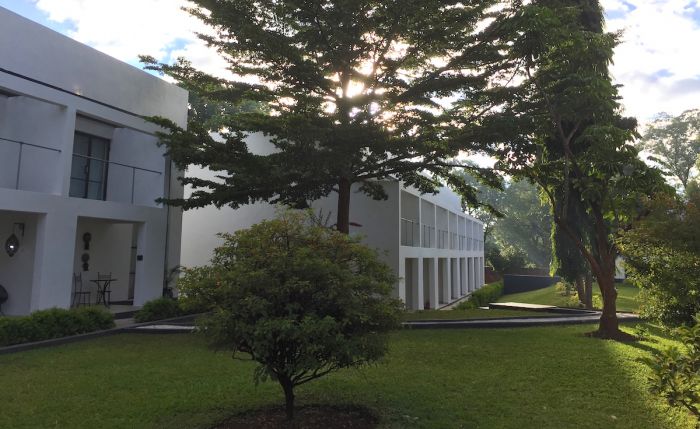
With city locations in Lusaka, Zambia, and Lilongwe, Malawi, as well as a resort called Kaya Mawa on Lake Malawi, the company represents a new wave of African-born hospitality that blends traditional handicrafts with contemporary amenities. The company has plans to expand with properties in Kampala, Nairobi, Dar Es Salaam and Maputo among other destinations in the coming years.
Partners Nicholas Brown and James Lightfoot refurbished the former Japanese ambassador’s residence in Lilongwe—an imposing compound in a high-end suburb—into their first city hotel: Latitude 13. The property started with just nine suites, including three in the original house, overlooking a bucolic lawn and swimming pool. These suites have an industrial edge, with touches like polished concrete floors, halved metal barrels serving as nightstands, and chandeliers that incorporate both metal chains and twinkling crystals. The original, angular swimming pool is also on this part of the property, as are the meeting rooms.
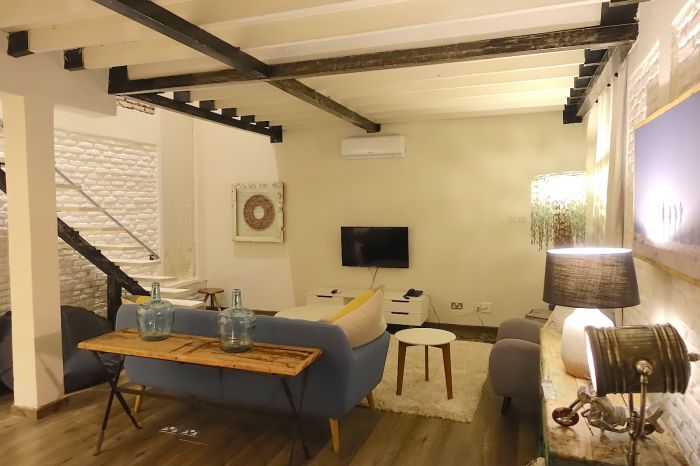
However, in recent months, the hotel has opened a whole new wing on an adjoining property. It includes not only 20 new rooms and suites, but also an all-new restaurant and bar, a gleaming fitness center and small spa, and its centerpiece—an aquamarine, 18-meter pool that just begs to be lounged beside all day long. Preferably in one of the colorful low-slung Acapulco-style chairs.
The 20 new suites are housed in gleaming white blocs surrounding the main building. Pathways run along them and to the pool with stepping stones and shimmering pebbles that gleam in the moonlight.
The rooms are airy and bright, with high ceilings and large windows overlooking the gardens, as well as exposed brick walls and blond wood flooring. A palette of white and blue that permeates the living spaces and bedrooms lends the rooms a resort-style ambiance.
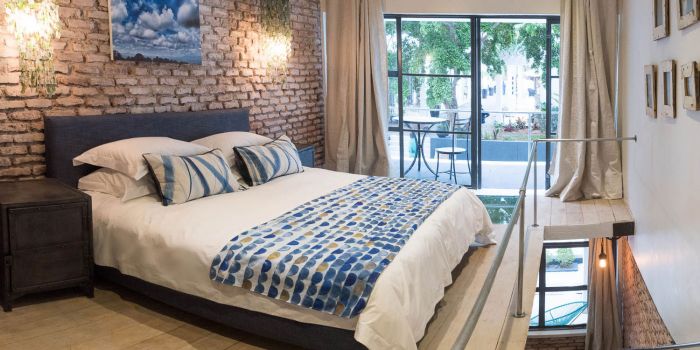
The rest of the aesthetic might most aptly be described as factory fashionable, with room fixtures that incorporate industrial elements. Instead of simple runners, open-plan showers utilize old rail ties as thresholds (there are also freestanding soaking tubs). Bathroom sinks have pedestals constructed from sewing machines, and mirrors are framed by pressed tin tiles. Instead of bannisters, simple metal piping serves as the handrails along the floating staircases in duplex suites.
Bedrooms feature the de rigueur elements you’ll find at international mainstays, including crisp white linens, and eye-catching patterned motifs. However, there are also locally produced décor pieces as well, including the distinctive light fixtures that incorporate strands of multi-colored, cloudy glass fragments; and photographs like the ones you might see of fisherman plying the waters of Lake Malawi. Much of the furniture is sourced from African workshops and studios.
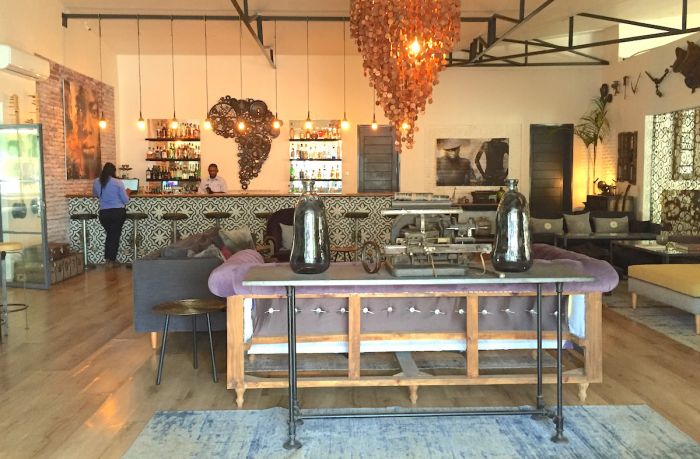
The hotel’s restaurant is now also located in one of the new buildings. Guests can enter through the bar area, which feels like a chic parlor where you might run into friends from safari. On the wall behind the tiled bar itself is a Steampunk-style map of Africa constructed from gears, wheels and lenses. Traditional farm tools and musical instruments jauntily line the other walls.
Separated by a divider constructed of metal gears and weathered glass shards is the restaurant right next door. The main dining room contains charmingly mismatched chairs and tables (including one that’s simply a wooden door), while guests who prefer to dine alfresco can snag a table out on the patio looking out toward the pool.
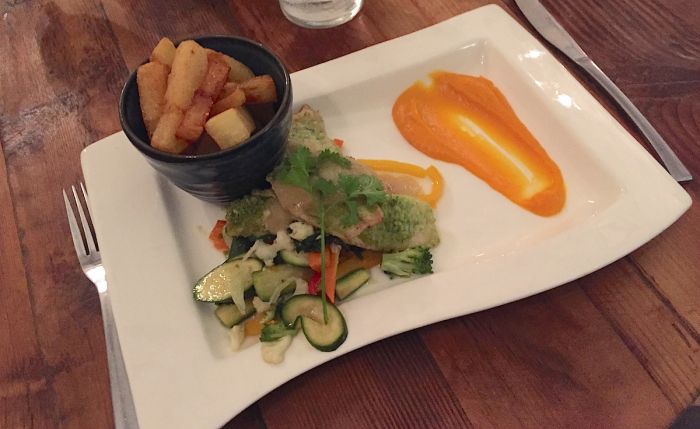
The menu is contemporary continental, with influences from Europe, Africa and Asia in evidence. Among the starters, guests will find a light dish of oak-smoked salmon mousse with aioli, dill and mascarpone on toasted artisanal bread. The house salads include one with coriander, coconut and ginger-poached chicken served with Asian slaw and spiced roasted chickpeas. Entrees included entries like prawn risotto, red Thai chicken curry, aged T-bone steak with pepper or blue cheese-mushroom sauce, and herb-crusted fillet of chambo fish with coconut, eggplant, mushrooms, carrot and citrus puree over rice pilaf or with potato wedges. The wine list is succinct but stocked with big names from South Africa including Delaire Graff and Babylonstoren.
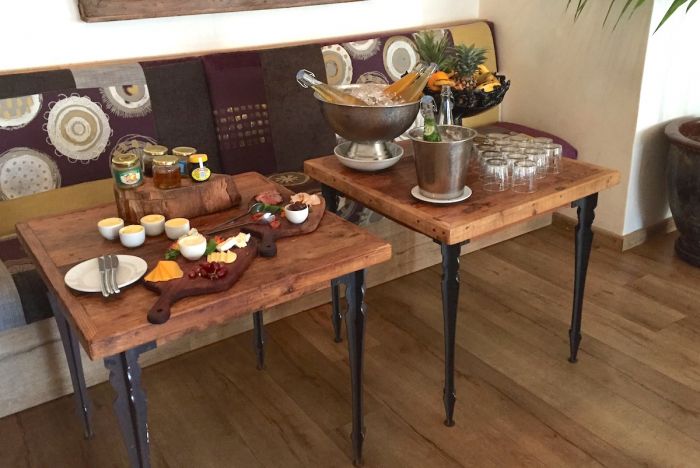
Meanwhile, for breakfast in the mornings, guests can help themselves to a small buffet of pastries, fruits and juices, then order hot dishes from the menu including a rich butterscotch oatmeal, and poached eggs with Parma ham, roasted tomato and shaved parmesan.
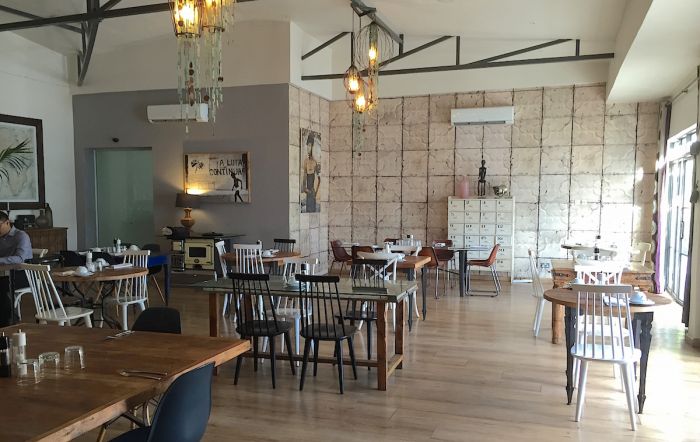
Coming across Latitude 13 feels like finding a delightful surprise in one of Africa’s lesser-known capitals, but it shouldn’t. After all, Malawi is known as the warm heart of Africa, and that genuine ethos of hospitality and warmth shine through in the service level and the laidback ambiance of the hotel as a whole. Combining contemporary comforts, traditional handicrafts, and local art, the property represents both a respite from the busy streets of the city outside, as well as a glimpse of where luxury hospitality in Africa might just be heading next.










